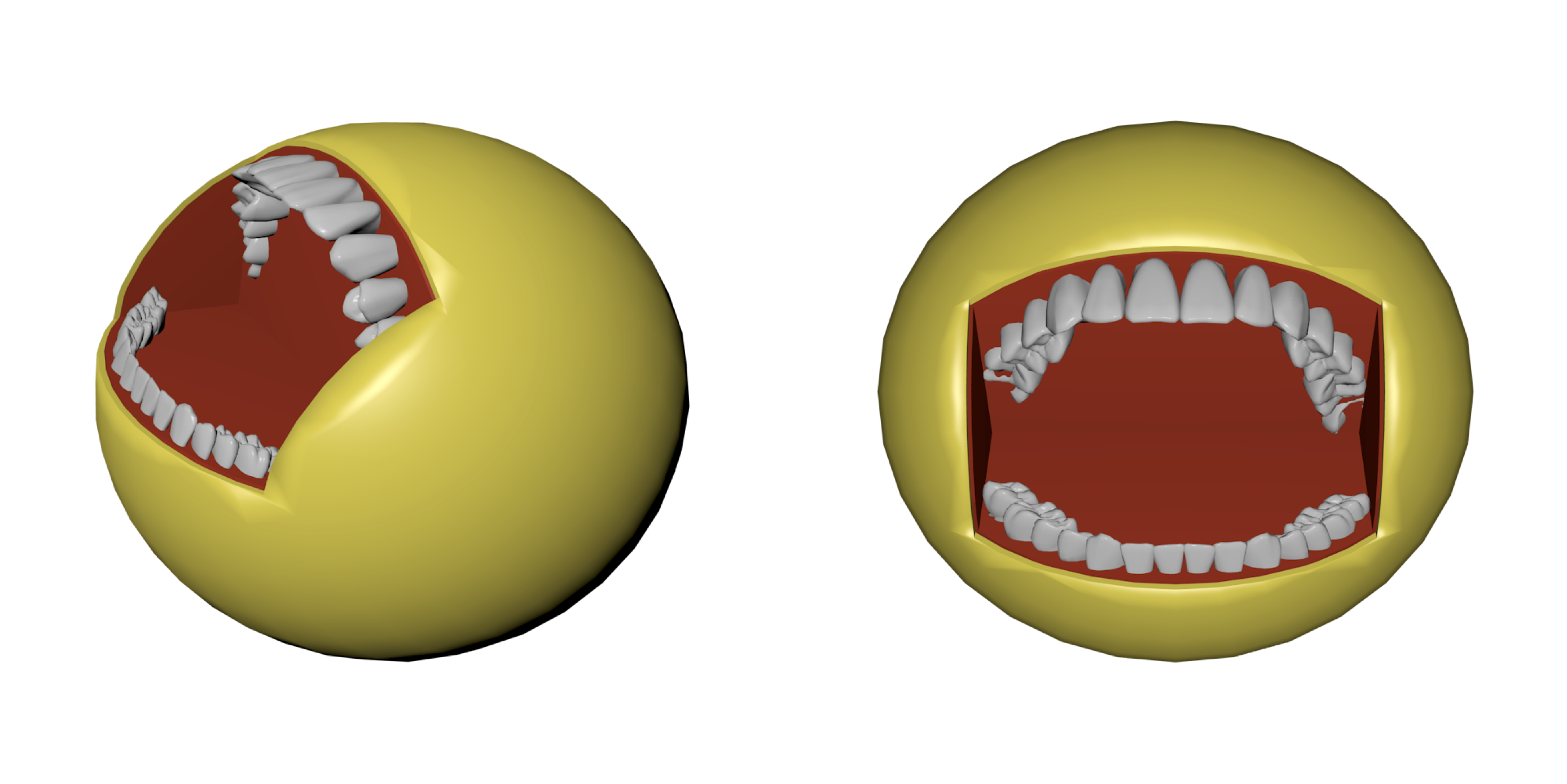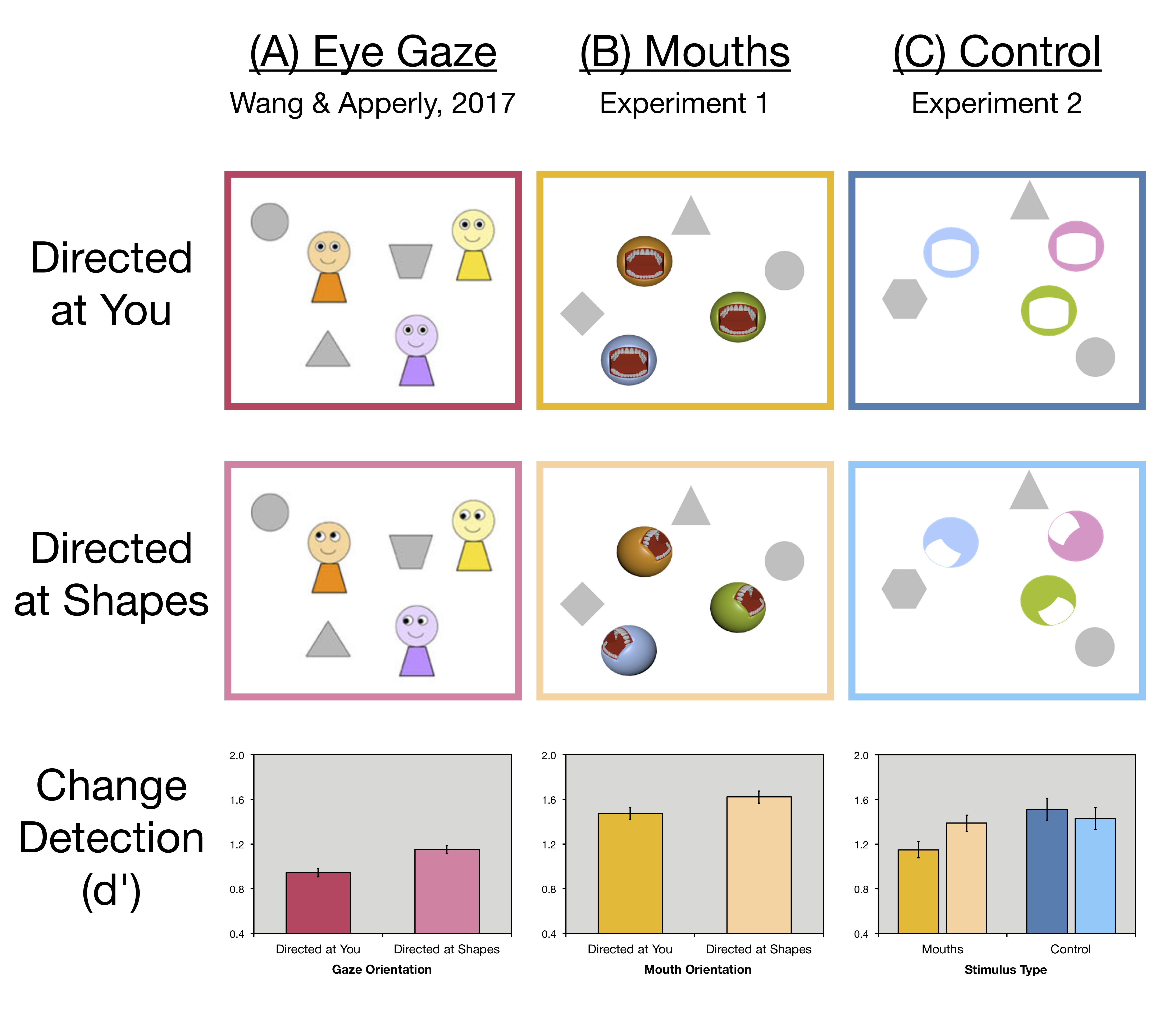'Mind Contact'
- . Intentionally distracting: Working memory is disrupted by the perception of other agents attending to you — even without eye-gaze cues. Psychonomic Bulletin & Review, 26, 951-957. PDF
Of all the visual stimuli you can perceive, perhaps the most important are other people’s eyes. And this is especially true when those eyes are looking at you: direct gaze has profound influences, even at the level of basic cognitive processes such as working memory. For example, memory for the properties of simple geometric shapes is disrupted by the presence of other eyes gazing at you. But are such effects really specific to direct gaze per se? Seeing eyes is undoubtedly important, but presumably only because of what it tells us about the ‘mind behind the eyes’ — i.e. about others’ attention and intentions. This suggests that the same effects might arise even without eyes, as long as an agent’s directed attention is conveyed by other means. Here we tested the impact on working memory of simple ‘mouth’ shapes — which in no way resemble eyes, yet can still be readily seen as intentionally facing you (or not). Just as with gaze cues, the ability to detect changes in geometric shapes was impaired by direct (compared to averted) mouths — but not in very similar control stimuli that were not perceived as intentional. We conclude that this disruption of working memory reflects a general phenomenon of ‘mind contact’, rather than a specific effect of eye contact.
This research was conducted in collaboration with Clara Colombatto.
Figures from the Paper

Figure 1: Direct and averted mouths
Stimuli used to evoke the perception of (A) direct and (B) averted 'gaze' - but critically, without any eyes! View example directed and averted displays here and here.

Figure 2: Experimental conditions & results
Stimuli and results from investigations of visual working memory disruptions caused by eye gaze, mouths, and control stimuli: (a) Sample displays and results from Experiment 1a of Wang and Apperly (2017). (b) Sample displays and results from Experiment 1. (c) Sample displays and results from Experiment 2, which included non-agential control stimuli.